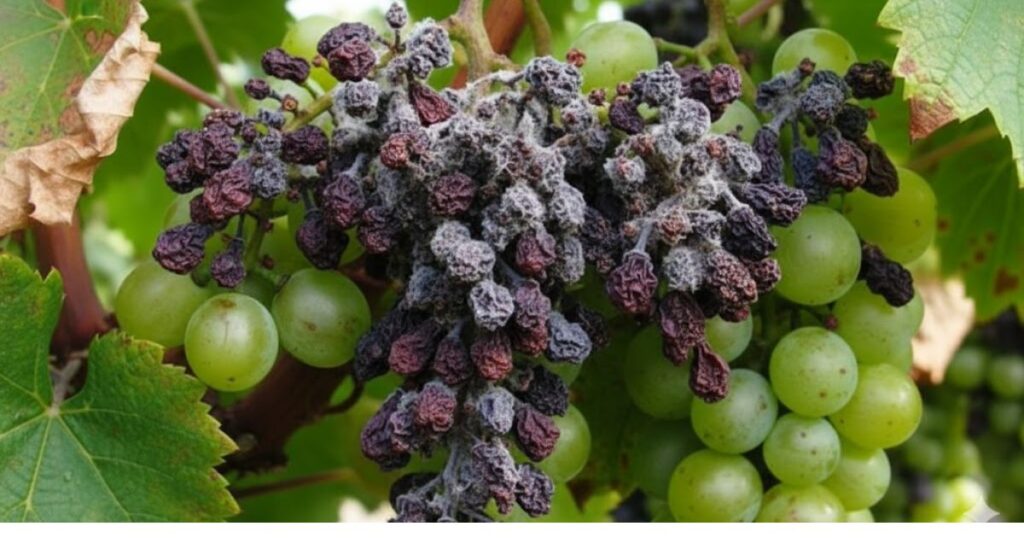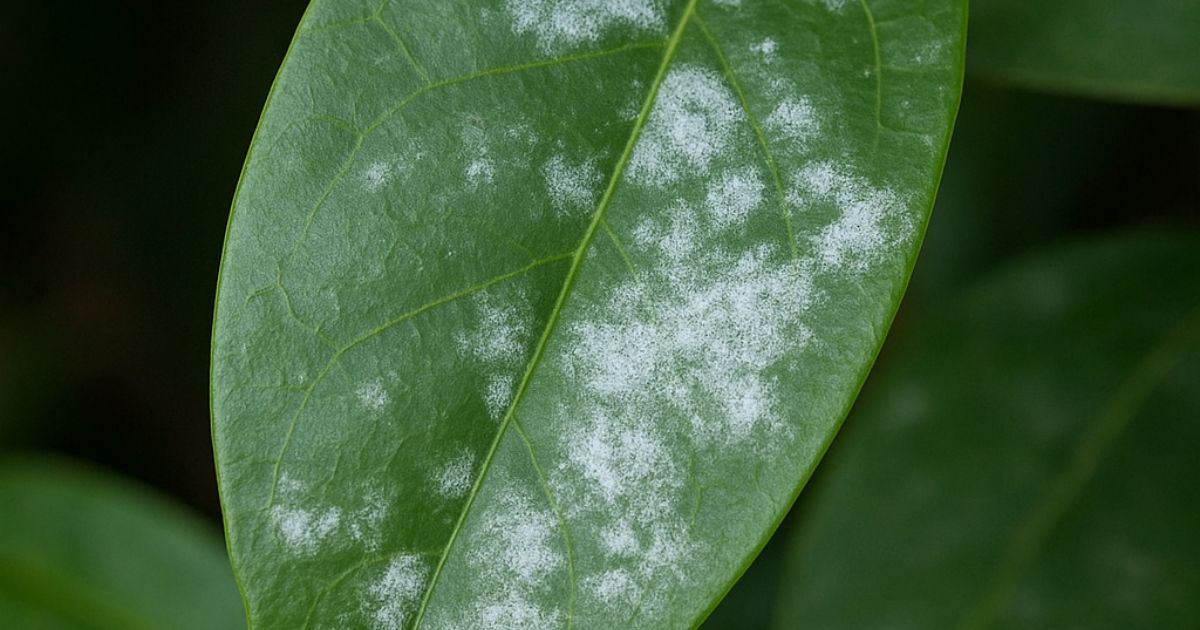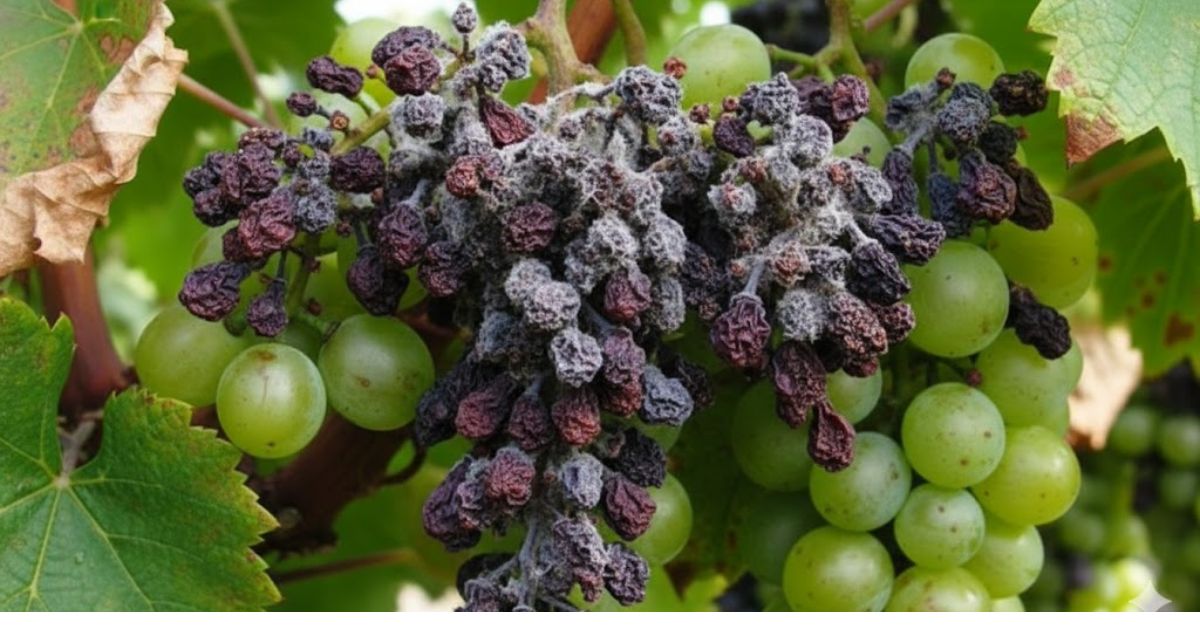Grapevines are a rewarding crop, yielding juicy clusters that can be enjoyed fresh, dried, or fermented into fine wine. However, maintaining healthy vines requires vigilance. Grapevines are vulnerable to a variety of diseases that can weaken plants, ruin fruit quality, and reduce overall yield. From fungal illnesses such as black rot and powdery mildew to bacterial and viral threats, early detection is key to saving your vines before damage becomes irreversible.
In this guide, we’ll help you identify common grapevine diseases through clear pictures and practical descriptions, enabling you to recognize problems early. Whether you’re a home gardener or a vineyard manager, understanding the visual signs, such as leaf spots, discoloration, mold, or shriveled fruit, will empower you to take quick, effective action. Let’s look at the most common grapevine diseases, their symptoms, and simple strategies to keep your vines thriving all season long.
The Impact of Grape Vine Diseases
Before delving into specifics, it’s worth understanding the broader threat. Grape diseases don’t just affect aesthetics; they slash yields by up to 50% in severe cases, compromise fruit quality, and increase production costs through treatments and lost labor. Globally, powdery mildew alone costs the wine industry over $1 billion annually in control measures and diminished harvests.
These pathogens exploit environmental stressors, such as drought, excess rain, or poor nutrition, which weaken the vines’ natural defenses. Climate change is exacerbating the issue, expanding ranges for warm-loving fungi and shifting vector populations for viruses. Yet, knowledge is power: many diseases are manageable with cultural practices, resistant cultivars, and targeted sprays. By familiarizing yourself with visual cues, What’s Wrong With My Plant you can catch problems early, when they’re easiest to curb.
Powdery Mildew: The White Phantom
What It Is and How It Spreads
Powdery mildew, driven by the obligate parasite Erysiphe necator (formerly Uncinula necator), is arguably the most widespread grape foe. This fungus doesn’t need free water to infect; it thrives in the 10-30°C range with relative humidity above 50%, germinating directly on plant surfaces. Grapevine downy mildew symptoms Spores hitchhike on wind currents, colonizing new growth, such as shoots and leaves.
Spotting the Symptoms
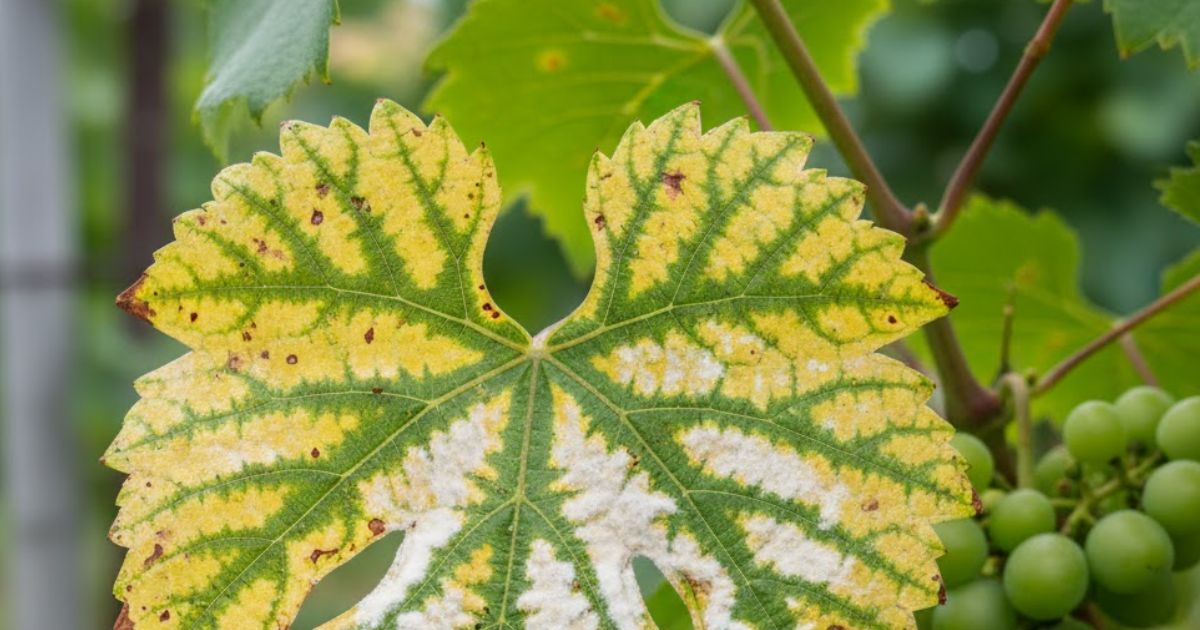
The signature sign is a talc-like white powder coating upper leaf surfaces, young canes, and cluster stems. It starts as faint patches, expanding into full mats that distort tissues, leaves pucker, shoot tips bend, and berries develop russeted, bitter skins. In advanced stages, chlorosis (yellowing) leads to defoliation, exposing fruit to sunburn and halting photosynthesis.
On red varieties, the powder contrasts starkly against the green; on white grapes, it’s subtler until the damage becomes apparent.
Identification with Pictures
Examine under morning light: the powder wipes off like dust but regrows. A Visual Guide to Identifying Butterflies A classic photo shows a vibrant green leaf dusted with white, its edges curled. Think of it as nature’s bad spray tan.
Management Strategies
Prevention trumps cure: prune for open canopies to boost UV exposure, which suppresses spores. Apply elemental sulfur weekly from bud swell through bloom, or use biofungicides like Bacillus subtilis for organic setups. Post-infection, systemic triazoles can halt the spread; however, rotating chemistries helps prevent resistance. Clean up fallen leaves to avoid overwintering chasmothecia from starving.
Downy Mildew: The Rainy Day Wrecker
Causative Agent and Conditions
Plasmopara viticola, a closely related oomycete to algae, causes downy mildew. It demands leaf wetness for 2-6 hours at 10-25°C, making it a monsoon menace. Anthracnose grapevine leaf spots Sporangia splash from soil or infected debris during rain, germinating on wet foliage.
Visible Signs
Upper leaves exhibit oily, yellow spots that develop into brown spots. Flip the leaf: a mosaic of white, downy sporulation emerges in cool, humid nights. Severe cases cause angular lesions that merge into leaf blight, with berries mummifying under a gray, felt-like coating. Vines defoliate by midsummer, Powdery mildew on grapes pictures weakening their reserves for the following year.
Picture-Perfect Diagnosis
Hold a leaf to backlight the translucent oil spots, allowing them to glow. Iconic images capture the underside fuzz, dense as morning dew on cobwebs, against mottled topsides.Botrytis grey mold on grapes
Control Measures
Cultural tweaks, such as spacing to promote morning dew evaporation, help. Protective fungicides (such as mancozeb and chlorothalonil) shield against pre-rain; curatives like metalaxyl take effect post-infection. Resistant hybrids (‘Regent’, ‘Phoenix’) are game-changers in prone areas. Trench old vines to bury inoculum.
Black Rot: The Mummy Maker
Pathogen Profile
Guignardia bidwellii orchestrates black rot, a polycyclic fungus exploding in 20-30°C warmth with >90% humidity. Pycnidia in leaf spots and mummies endure winter, rain-dispersing pycnidiospores to infect green tissues.
Symptom Spectrum
Leaves bear “frog-eye” lesions: tan centers rimmed brown-black, dotted with black pycnidia. Berries blacken from the stem end, shriveling to hard, raisin-like mummies laced with sooty spores. Small White Spots on Leaves: A Comprehensive Guide Clusters can lose 100% viability in epidemics.
Visual Verification
The feathery lesion edges and embedded “eggs” (pycnidia) are telltale. Photos often zoom on a berry’s half-rotted face, black and velvety, evoking a gothic still life.Grapevine disease identification images
Remediation Roadmap
Sanitation reigns: prune out mummies religiously. Captan or myclobutanil sprays from early bloom to veraison, timed by rain forecasts. Integrate with Bacillus for IPM. Opt for loose-clustered varieties to evade infection courts.
Botrytis Bunch Rot: Gray Mold Mayhem
The Culprit and Its Habits
Opportunistic Botrytis cinerea strikes moist, injured tissues, favoring 15-25°C. Conidia waft in from nearby crops; it colonizes senescing petals at bloom, Viral diseases in grape plants lying dormant until humidity spikes.
Hallmark Symptoms
Berries soften to translucent brown, sprouting fluffy gray mycelium that weaves clusters. Rot spreads rapidly in rain, yielding off-odored mush. In botrytized wines, controlled infection concentrates sugars, but uncontrolled infection leads to loss.
Imagining the Issue
Search for shots of clustered grapes shrouded in ash-like mold, berries leaking juice amid spore clouds.
Fighting Back
Loosen canopies with pre-bloom leaf pulling; apply pterostilbene or cyprodinil at bunch closure. Insect control curbs entry wounds. Prompt harvest in vintage years minimizes risk.
Pierce’s Disease: The Southern Scourge
Bacterial Basics
Xylella fastidiosa bacteria, vectored by glassy-winged sharpshooters, block xylem in hot climates (>25°C). Infected insects secrete the pathogen into wounds.
Telling Traits
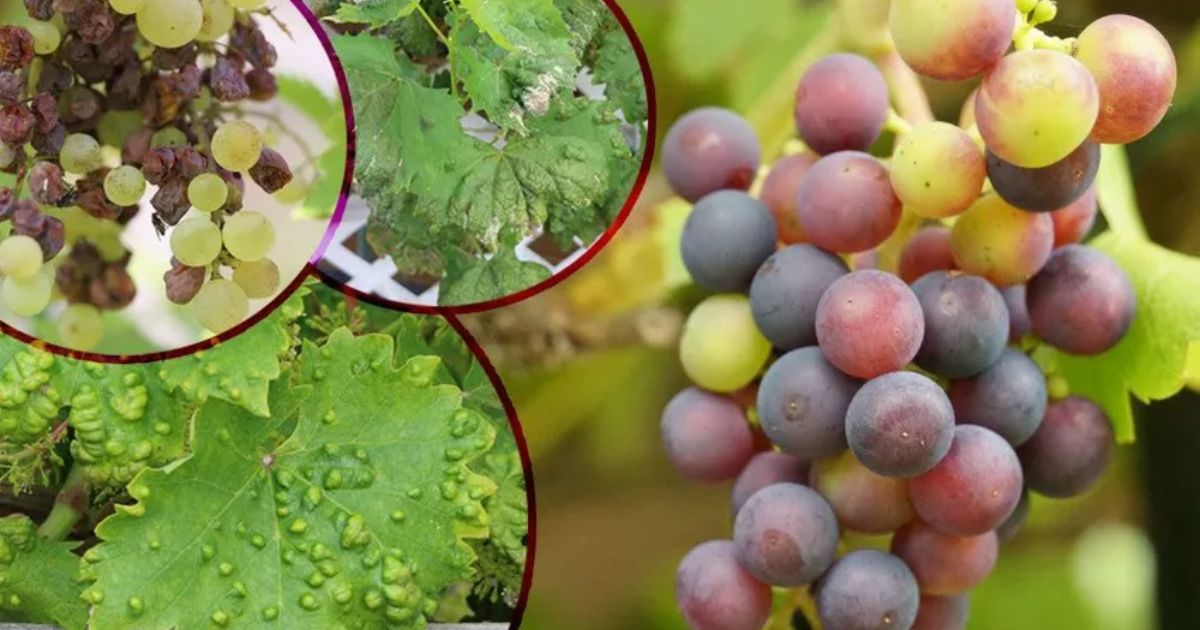
Leaves scorch from margins inward, retaining green veins or islands. Vines wilt permanently, canes die back, and fruit shrivels. Perennial infections can culminate in vine death within a few years.
Pictorial Pointers
Images reveal jagged yellow edges on brittle leaves, like fire-kissed foliage.
Defensive Tactics
Resistant rootstocks (‘1603C’) and vector management via kaolin clay sprays. Rogue and burn infecteds; quarantine in hotspots like Florida.
Environmental and Nutritional Problems That Mimic Disease
Not every wilted leaf or yellow spot on your grapevine is caused by a pathogen. Many environmental stresses and nutrient imbalances can produce symptoms that resemble those of fungal or bacterial infections. Understanding these “look-alike” problems helps you avoid unnecessary treatments and focus on the real cause.
Sunburn and Heat Stress
Prolonged exposure to intense sunlight can scorch leaves and fruit, leaving brown, papery patches that resemble the lesions of a disease. Sunburned berries may shrivel or turn white on one side. To prevent this, ensure adequate canopy cover and avoid excessive leaf thinning during heatwaves.
Frost and Cold Injury
Sudden temperature drops, especially after budding, can cause blackened, wilted shoots and dead leaf edges. This damage often resembles blight but actually results from cell rupture caused by freezing. Protect vines with frost cloths or wind machines during cold snaps to prevent damage.
Drought or Water Stress
When vines don’t receive enough water, they show wilting, leaf curl, and brown edges that mimic fungal disease. On the other hand, overwatering or poor drainage can suffocate the roots, leading to yellowing leaves similar to those caused by nutrient deficiencies. Consistent, moderate irrigation is key.
Nutrient Deficiencies
- Nitrogen deficiency: pale green or yellow leaves, starting from the bottom of the plant.
- Magnesium deficiency: yellowing between veins on older leaves.
- Iron deficiency: yellowing between veins on younger leaves.
- Potassium deficiency: scorched leaf margins and reduced fruit quality.
A soil test or tissue analysis helps confirm nutrient issues before applying fertilizers.
Chemical or Herbicide Damage
Drift from nearby herbicide applications or overuse of chemical sprays can cause twisted, spotted, How to Grow and Care for Honeysuckle or burned foliage. Always follow label directions and apply sprays in calm weather to minimize drift.
How to Tell the Difference
- Pattern: Diseases often start in clusters and spread; stress symptoms appear evenly across the plant.
- Timing: Environmental damage usually follows weather events (heat, frost, drought).
- The presence of mold or spores indicates an infection, rather than stress.
By learning to distinguish actual disease symptoms from environmental or nutritional stress, you can save time, reduce chemical use, and maintain healthier, more resilient vines throughout the growing season.
Prevention and Management Tips
Maintaining healthy grapevines begins long before disease symptoms appear. The most effective strategy is prevention through consistent care and regular monitoring. With proper vineyard management, you can significantly reduce the risk of infections and stress-related problems. Here are some essential tips to help your vines remain vigorous and productive throughout the entire season.
Practice Regular Inspection
Walk through your vineyard frequently, especially after rain or humidity spikes. Look for early warning signs, such as leaf spots, powdery coatings, or shriveled berries. What Causes White Spots on Tomato Leaves Early detection allows for timely action before diseases spread.
Prune for Airflow and Sunlight
Dense canopies trap moisture, creating an ideal environment for fungal growth. Prune your vines to ensure good air circulation and balanced sunlight exposure. Clean pruning shears with disinfectant between cuts to prevent the transmission of disease.
Maintain Clean Vineyard Hygiene
- Remove fallen leaves, old clusters, and pruned debris promptly, as these can harbor fungal spores that cause disease.
- Sanitize tools and equipment after use.
- Disinfect trellises or supports if diseases have been present in previous seasons.
Good sanitation prevents re-infection and keeps your vineyard healthier year after year.
Manage Water Wisely
Avoid overwatering and ensure proper drainage. Wet leaves and waterlogged soil encourage root rot and mildew. To maintain vegetation, use drip watering rather than overhead sprinklers. Dry and maintain balanced soil moisture.
Apply Fungicides or Organic Treatments Proactively
For regions with high humidity or recurring issues such as mildew or rot, consider applying preventive fungicides. Organic growers can use options like sulfur, neem oil, or copper-based sprays, always following safety and timing guidelines.
Choose Disease-Resistant Varieties
When planting new vines, choose disease-resistant grape varieties that are suited to your climate. Many modern cultivars are bred to resist common threats such as powdery mildew or black rot, A Visual Guide to Identifying Butterflies reducing the need for chemical controls.
Optimize Soil and Nutrition
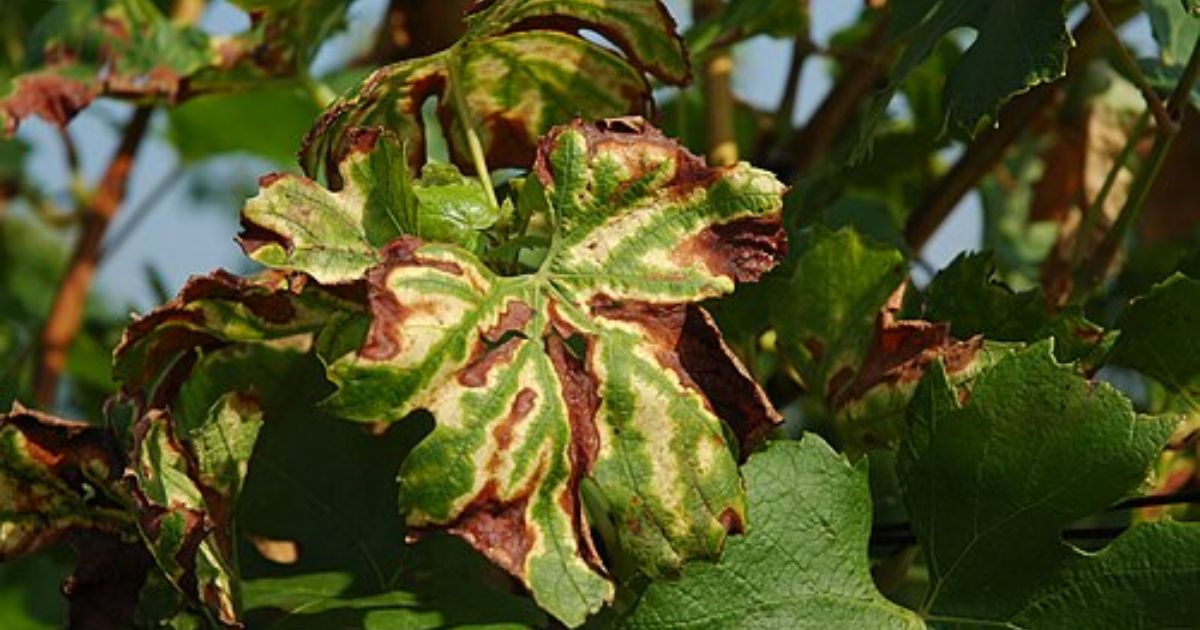
Healthy vines are naturally more resistant to infection. Conduct soil tests periodically and amend the soil with compost or organic matter as needed. Maintain balanced nutrient levels, neither too rich nor deficient, to promote strong, resilient growth.
Control Pests That Spread Disease
Monitor and manage insect pests such as leafhoppers, mealybugs, and sharpshooters, which can transmit viruses and bacteria. Use traps, beneficial insects, or targeted sprays as needed.
Conclusion
Healthy grapevines don’t just happen by chance; they’re the result of consistent observation, preventive care, and timely action. By learning to identify common grapevine diseases and understanding environmental or nutritional problems that mimic them, you can stop minor issues before they threaten your harvest.Remember, most grapevine diseases spread quickly, but with regular inspections, good vineyard hygiene, proper pruning, and balanced soil nutrition, you can maintain strong, productive vines year after year.
Whether you’re tending a backyard trellis or managing a whole vineyard, think of prevention as your first and best defense. Keep a photo reference guide handy, stay alert to early warning signs, and adjust your care routine with the seasons. With the proper attention, your grapevines will reward you with lush growth, healthy fruit, and a beautiful, thriving vineyard.
FAQ
How do I know if my grapevine has a disease?
Look for symptoms such as discolored leaves, powdery or fuzzy coatings, shriveled berries, or unusual growths on stems and roots. Compare what you see with reference pictures of common grapevine diseases to narrow down the cause.
What is the most common grapevine disease?
Powdery mildew is one of the most widespread grapevine diseases. It appears as a white, powdery coating on leaves, stems, and grapes, thriving in warm, dry conditions with poor airflow.
Can grapevine diseases be cured?
Some fungal diseases can be managed or controlled with fungicides and proper pruning, but bacterial and viral diseases (like Pierce’s Disease or Leafroll Virus) often have no cure. Infected vines should be removed to prevent spread.
How can I prevent grapevine diseases naturally?
Promote natural resistance through good vineyard hygiene, pruning for optimal airflow, balanced watering, compost-rich soil, and the use of organic sprays such as sulfur or neem oil. Choosing resistant grape varieties also helps reduce long-term risk.
Why are my grapevine leaves turning yellow?
Yellowing leaves can result from nutrient deficiencies (especially nitrogen or iron), water stress, or disease such as downy mildew. Test your soil first to rule out nutrient imbalance before applying treatments.

